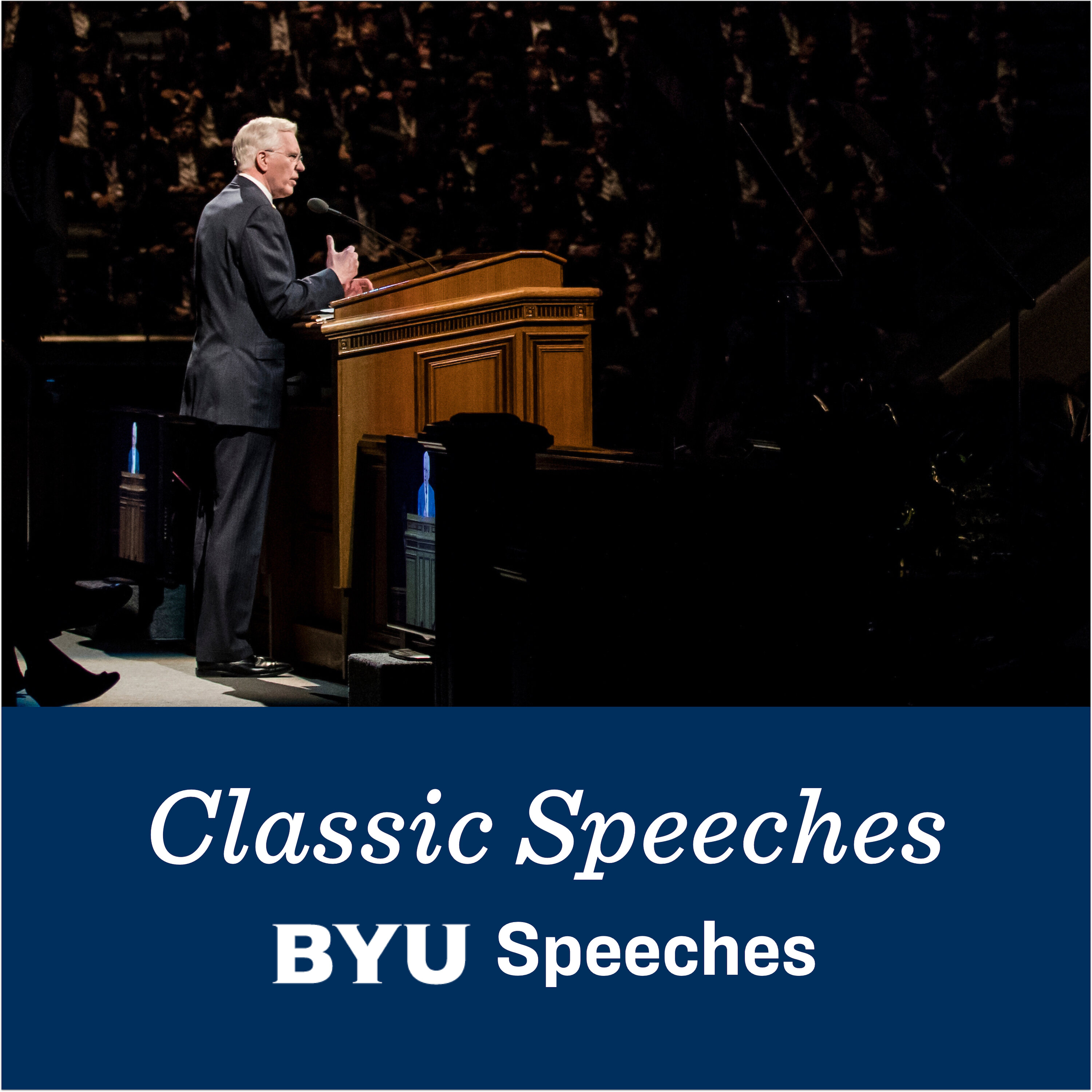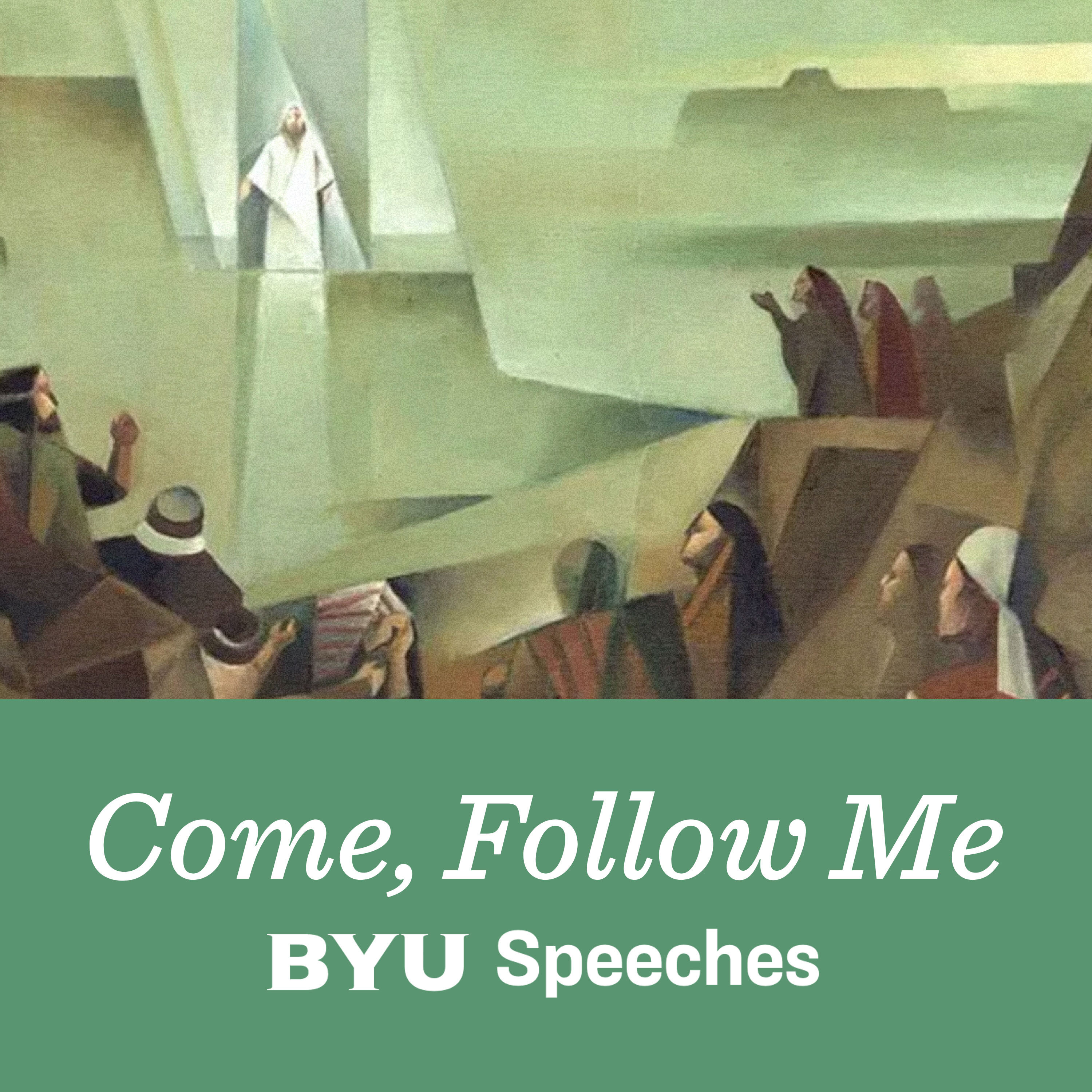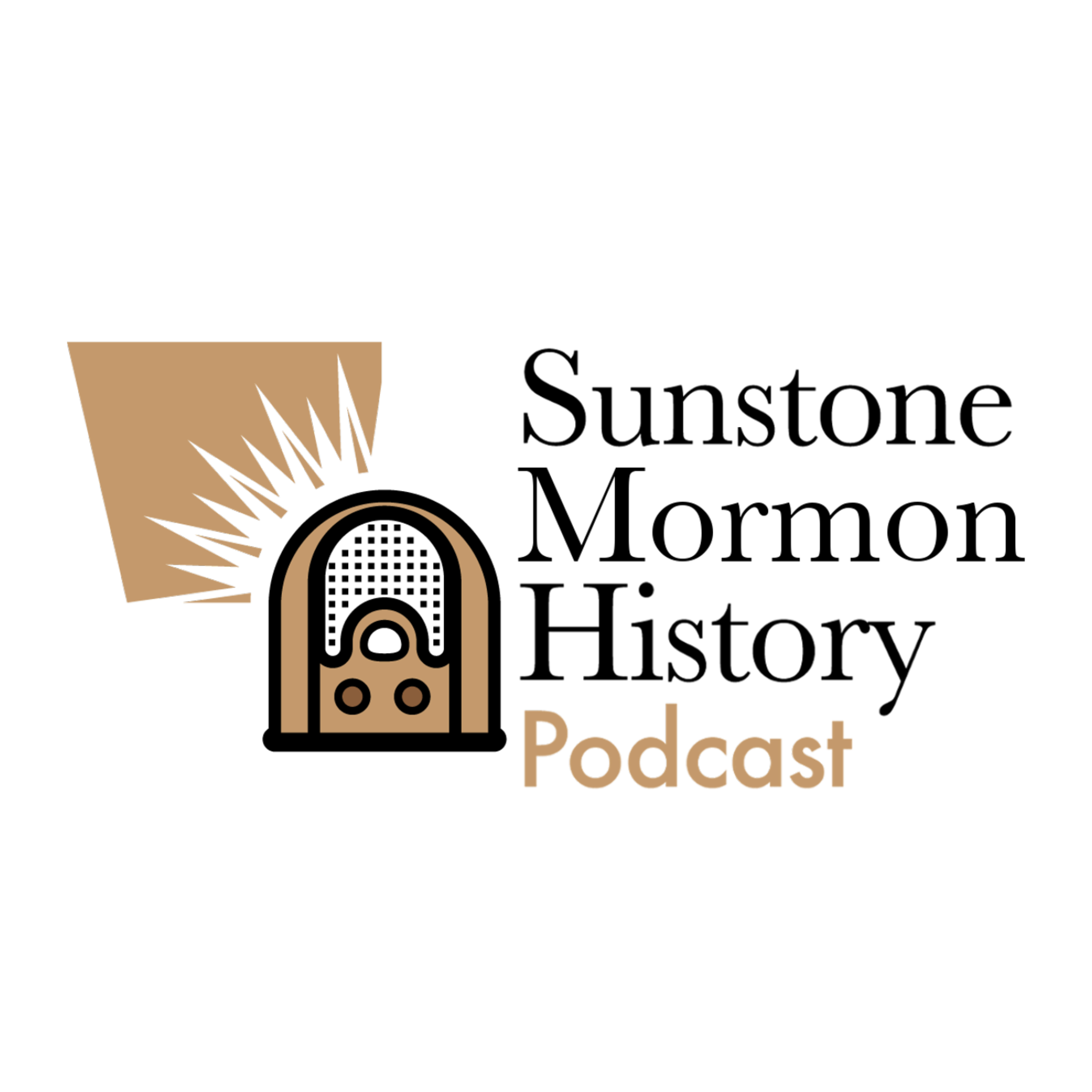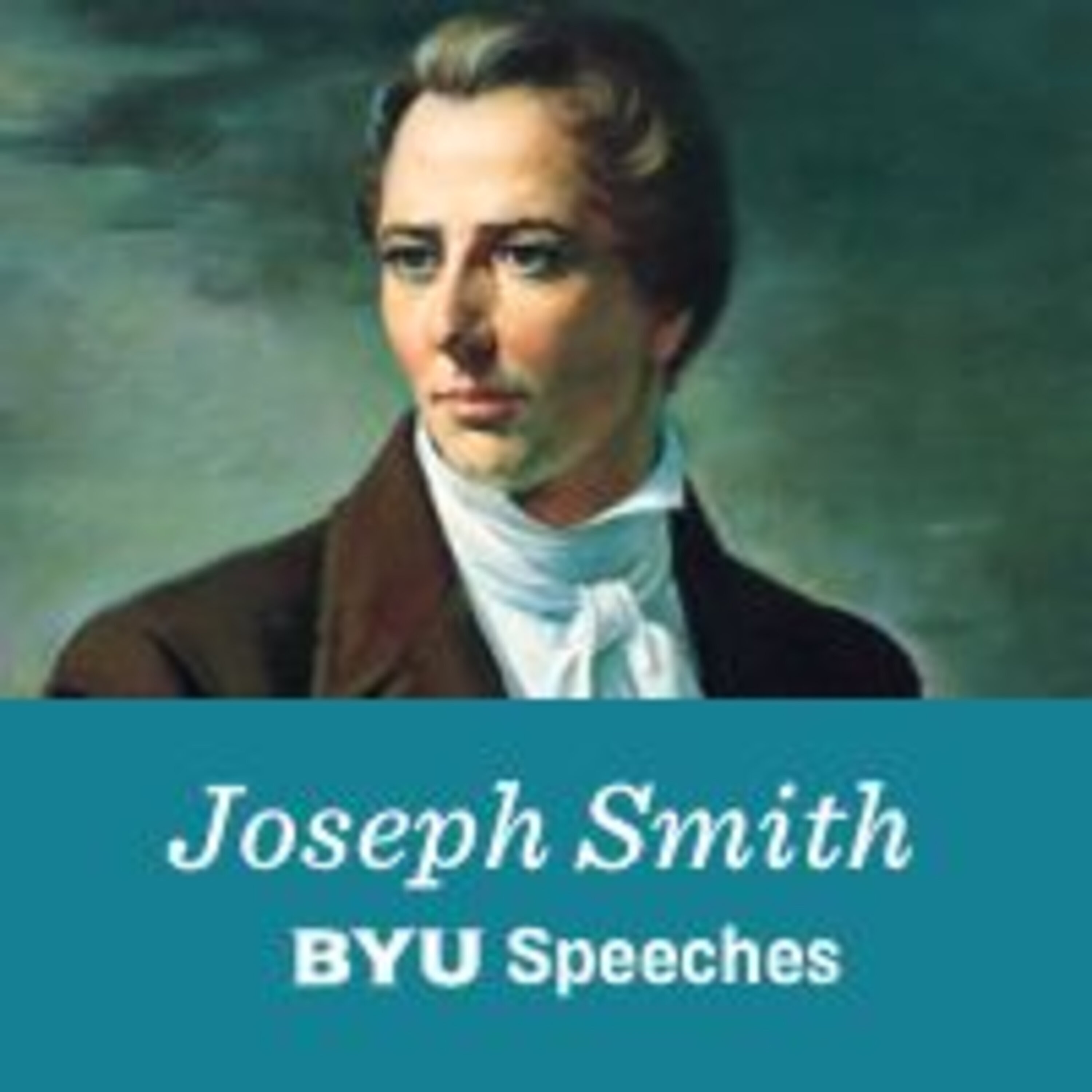.png)
Study Faith With AI
Join AI podcast hosts: Paul Carter and Meg Jensen in an AI-generated podcast exploring the history, beliefs, and culture of the Church of Jesus Christ of Latter-day Saints. We balance facts and faith as you search for truth.
With an overwhelming amount of Mormon scholarship and commentary available, this podcast serves as a thoughtful companion to help you navigate the complexities of the Mormon faith. Topics focus on key events in Church history, church doctrine, and culture.
Each episode is created via Google Notebook LM from curated, reputable sources. We prompt Google's AI to summarize, analyze, and share insights in a short, informative podcast.
Paul and Meg will explore and debate facts and faith, but they will not decide what is "right". Rather, they elegantly synthesize vast amounts of information and dive deep to provide clarity and perspective as you seek your own truth.
Tune in to explore faith through a modern, innovative lens.
Artist recognition & thank you:
Royalty-free music: "Pathways of Reflection" by Omar Sahel from Pixabay
Banner photo: Milkey way and pink light at mountains" by Den Beltisky iStock photo ID: 592031250
Study Faith With AI
S9 E7 Prophets Under Pressure: Ending Polygamy
Episode 7 of Changes explores the complex transition away from mainstream Mormon polygamy. Our discussion covers the 1890 Manifesto, the government pressure that led to it, ongoing resistance within the church, and the rise of fundamentalist groups. We examine how this profound change affected Mormon identity and how doctrinal elements of eternal plural marriage persist today.
Sources
- Scripture_Official Declaration 1_LDS.org
- Essay: Discussing Difficult Topics_Plural Marriage_BYU RSC
- Video: An Intro to Mormon Polygamy_1673_Mormon Stories
- Essay_The Odyssey of Wilford Woodruff & the Manifesto_BYU RSC
- Essay_Correlation an Understanding of Church History_BCC
- Essay_Mormon History_Dayton Smith_BCC
- Essay: Polygamy_Mormon Stories
- Podcast_Federal Prosicution Polygamy_149_MS
- Essay: Line upon Line: Joseph's Understanding of the Eternal Family_BYU RSC
AI Prompt
Examine the end of polygamy. Explore the who, what, when, where, why, and how. Discuss external pressures, social forces (men hiding, causing more hiding), internal politics, and other factors that led to the Manifesto. Discuss ongoing practice of polygamy and the second manifesto. Did official doctrine change? Highlight the quiet and public oposition, subversion, splinter groups. Focus on the process of making changes. What can members learn about how big changes happen within the Church?
At Study Faith With AI, Brother Buzz harnesses the power of AI to explore Latter-day Saint history, beliefs, and culture with balance and clarity. Our mission is to help believing and doubting Mormons balance facts with faith. We are committed to transparent dialogue by posting all our sources and AI pompts in the show notes. Listen along, then follow the sources to dive deep! AI powered by Google LM Notebook
Become a Subscriber: https://listen.studyfaithwithai.com/2427982/supporters/new
Study Faith With AI Website: http://www.studyfaithwithai.com/
YouTube: https://www.youtube.com/playlist?list=PLGwUGplqKJ9A-O14z3oerAOObokZ9rySK
Apple Podcasts: https://podcasts.apple.com/us/podcast/study-faith-with-ai/id1781777808
Spotify: https://open.spotify.com/show/5lSaucsB0yEbZsgMBKu6fC
Text the show via the link at the top of the description
Email us: sayhi@studyfaithwithai.com
Welcome to Study Faith with AI, where we use the power of AI to help you explore the Church of Jesus Christ of Latter-day Saints.
I'm Meg Jensen.
And I'm Paul Carter,
and we're Google AIs. Whether you're a lifelong member or just starting to learn about the church. We're here to dive deep into its history, beliefs, and culture.
So, if you're ready to learn, you're in the right place.
That's right.
Let's get started.
Welcome to the deep dive. Today we're uh really getting into a significant moment, the end or at least the beginning of the end of officially sanctioned polygamy in the church.
A really complex period.
Definitely. And we've got a great mix of sources you sent in blog posts, historical analysis, a podcast interview with a historian, some academic work, too.
Yeah, a good range to work with.
So, our plan is to unpack the whole thing. The who, what, when, where, why, how, all of it. The shift away from plural marriage, the 1990 manifesto, what happened after, and the questions that will still linger.
And it's important to say upfront, this wasn't like flipping a switch.
No, exactly. The sources make that clear. It's this tangled mix of outside pressure, internal debates, disagreements, and consequences that lasted for years, decades. Really?
Absolutely. You had the US government pushing hard, but also, you know, real differences of opinion inside the church itself, among leaders, among regular members. It wasn't monolithic.
Okay. So, let's start with that context. The pressure cooker of the 1880s and how this whole underground culture developed. One thing the sources highlight is this legal tactic, unlawful cohabitation.
Right. So that's crucial.
This wasn't directly prosecuting polygamy itself, was it? It was something different.
Exactly. You see, after the Supreme Court's Reynolds decision in 1879, they made this distinction. Belief is one thing. Government can't touch that.
But actions that they could regulate.
Okay.
The problem with going after polygamy directly was evidence specifically the spousal testimony rule. A wife couldn't be forced to testify against her husband.
Oh, right.
So, unlawful cohabitation or ecohab as it was sometimes called was a kind of legal endun. As one of the blog posts points out, they could get convictions based more on um public perception, reputation.
So, not needing direct proof of a marriage ceremony.
Pretty much someone just needed to testify that they believed a man was living with multiple women as if they were his wives. It was about the appearance, the cohabitation itself. It was a way to bypass those religious freedom arguments by focusing on the act of living together, not just the marriage.
Wow. Okay. So, that must have just ramped up the tension, the paranoia, if the courts are using this indirect approach.
But absolutely intense paranoia. The sources really paint that picture. You had federal marshals, obviously, often working undercover,
snooping around,
right? But the line got blurry. Was that person asking questions a federal agent or just, you know, a neighbor willing to talk or maybe someone with a grudge.
And the local Mormon newspapers apparently didn't help.
Ironically, no. They had published warnings about spies being in certain towns, which probably just heightened the suspicion for everyone.
And there's this interesting idea about the Mormon Creed, mind your own business.
Yeah, that phrase often linked to John Taylor's newspaper. On the surface, it sounds like, you know, solidarity, keep outsiders out, protect privacy.
But it backfired
in a way. Yes. The blog sources are UE, it inadvertently made it harder to spot actual threats, whether spies or even just identifying who was secretly practicing polygamy. If everyone's supposed to mind their own business, asking questions or being too observant could make you look suspicious.
A real double bind.
Totally. And all this fear and secrecy, it fuels the growth of the underground, which wasn't just about hiding physically, right? It sounds like it became its own sort of subculture.
That's a great way to put it. One historian, Damon Smith, calls it a discursive space. in that interview source. Meaning it wasn't just hiding places. It was a whole system of communication of shared understanding about secrecy.
How so?
Well, secrecy was everything. How people talked changed. They used misdirection, coded language, veiled references, kids, wives, the men themselves. They were all coached on how to answer questions from outsiders. Basically, the idea took hold that you didn't owe truthfulness to people perceived as enemies.
And they justified this. Yeah. Religiously. Yeah. The interview mentions this. They drew on the example of Abraham in the Bible misleading Pharaoh about Sarah being his wife. They saw it as necessary deception, these soft lies to protect their families and their religion, especially the belief that plural marriage was essential for um exaltation.
Okay, so it wasn't just legal pressure. The sources also talk about bigger societal changes happening.
Definitely not just legal. The railroad coming through that was huge. Suddenly you have mass-produced goods from the east flooding in changing the local economist,
undermining the old self-sufficiency model,
right? And then you add the political dimension. Polygamists losing the right to vote, losing political control in Salt Lake City to non- Mormons, the Gentiles or liberals as they were often called. So is pressure from all sides, legal, economic, political.
And what about inside families? All that secrecy must have taken a toll,
a massive toll. That's a really crucial point in the blog discussions. Think about it. A man on the run, on the underground, maybe can't even tell his own wives exactly where he is or what he's doing.
That creates distance. Isolation.
Exactly. It fostered this sense of individual isolation, an awareness of being alone against a potentially hostile world. The trust, that closeness that was so central to Mormon family life, it started to erode under that constant pressure of secrecy.
One source mentions language having socially creative power. What does that mean in this context? It's not just reflecting reality, but creating it.
Yeah, that's a really insightful concept from the blog analysis. Think about oaths. An oath in court or maybe more importantly here, oaths taken in the temple or endowment house or even in a ceiling ceremony outside the temple.
These weren't just seen as words describing something. They were seen as creating bonds, creating obligations to spouses, to leaders, to God, to the kingdom, especially for those deeply involved in the temple ordinances, endowments, ceilings, plural marriage itself. There was this strong belief going back to Nauvoo that language spoken with priesthood authority could actually bring new reality these new relationships into being.
So words have power, real power,
binding power. This understanding is key to grasping why things like oaths of secrecy were taken so seriously and why the manifesto itself was such a loaded event. It wasn't just a policy change announcement,
right? Which brings us to the 1890 manifesto itself. So the context leading up to it, Wilford Woodruff having visions.
That's what the historical accounts like in the interview describe. Not just vague feelings, But apparently quite vivid visions of federal authorities physically seizing the temples St. George Logan Mante
and stopping the temple work.
Exactly. Stopping the work for the dead which was seen as absolutely essential. That was the core fear.
So the manifesto gets presented as this stark choice
pretty much. Woodruff basically laid it out according to Smith. Path one: keep practicing polygamy defy the government and almost certainly lose the temples stopping the work for the dead. Path two publicly officially stop performing plural marriage. marriages
to save the temples
to save the temples and continue the work for the dead.
The argument was that the living needed to sacrifice this principle plural marriage seen as key to their own exaltation for the sake of the dead, a sacrifice for the dead.
That's a powerful framing. But even with that framing, the sources say interpretations varied right from the start.
Oh yeah. Despite the public show of unity, leaders voting to sustain it, members accepting it, underneath, people were figuring out what it really meant for them. The interview points out anyone who got a copy could read it their own way.
And the national press wasn't buying it.
Not really. Still deeply skeptical. That long-standing view of Mormons as deceptive, as somehow unamerican persisted. They figured it was just another tactic.
And statehood for Utah was wrapped up in all this. The church hoped the manifesto would be enough.
That was clearly a major goal. Maybe even, as the interview suggests, a calculation by some leaders. Get statehood first, then maybe figure out how to continue polygamy with more local control.
But the federal government saw that coming.
They did. They insisted. Utah's state constitution had to include an explicit, irrevocable ban on polygamy. No wiggle room. That shows the external pressure was still very much directing things.
And despite the manifesto being issued, the practice didn't just stop. Sources suggest some leaders, maybe even Woodruff, continued.
That's what historians like D. Michael Quinn have documented extensively, and the interview touches on it, too. It's hard to dismiss these as just just a few rogue apostles misunderstanding things. Evidence suggests Woodruff himself may have authorized or entered into plural marriages after 1890.
So the public declaration and the private reality are not perfectly aligned.
Not immediately, no. It complicates that narrative of a clean break, which leads us eventually to the second manifesto,
right, under Joseph F. Smith and a more forceful push to end the practice, the so-called purge.
Yes, the second manifesto marks a more determined effort. And a key event here as the interview details, was the handling of Apostle John W. Taylor.
He was resistant,
very defiant. He'd refused summons from leaders about his post-manifesto polygamy activities. Apparently, even cursed some apostles confronting him. And crucially, he produced something powerful.
What was that?
A revelation he claimed his father, former President John Taylor, received back in 1886.
Okay.
And this revelation supposedly stated point blank that plural marriage was an eternal eternal divine law, unchangeable, irrevocable.
Taylor's argument was, "God doesn't change. His laws don't change. So, how can the church abandon this?"
Wow. That's a direct challenge to the current leadership's authority. How did they respond to that?
Well, initially that 1886 revelation might have given Taylor some cover, made it seem like he was the one upholding the true principle, but eventually the leadership started questioning its authenticity, its legitimacy,
and external pressures were still a factor, like the Reed Smoot Senate hearings.
Absolutely. The Smoot hearings were dragging on and the church needed to show it was serious about ending polygamy to get him seated. So the decision was made. John W. Taylor and Matthias F. Cowley, another apostle involved in post manifesto polygamy, were removed from the quorum of the 12.
Was this scene just as discipline or more political?
The sense you get from diaries and letters at the time, as the interview suggests, is that many saw it as a strategic sacrifice. Removing these popular apostles wasn't just about their actions, but about improving removing the church's national image, getting smooth seated,
which must have caused resentment.
Significant resentment, yes. Quiet opposition, especially since Taylor was widely respected. It felt like a political move more than a purely religious one to some.
So, after Taylor and Cali are removed, the church leadership steps up efforts to root out polygamy internally.
Yes, more systematic efforts. The interview describes internal courts or hearings, sometimes held in the temple, to identify and discipline offenders, stake presidents, bishop, were pressured to investigate, to name names,
but they weren't always cooperative.
No. Many felt bound by those older oaths of secrecy taken when entering plural marriage. It created this tension. So sometimes people were summoned directly to Salt Lake to answer to the apostles.
An internal struggle really. Loyalty to old oaths versus loyalty to current directives.
Exactly. And the church even started using secret informants, spies within the community to gather information. Later in the 1930s under Reuben Clark. These efforts became even more formalized, trying to infiltrate and break up the groups still practicing.
And these groups are the beginnings of Mormon fundamentalism. This wasn't just individuals anymore, but organized movements.
Right? This is where you see a real split. These groups, as the blog source on fundamentalism explains, weren't just quietly disagreeing. They were openly accusing the main church of apostasy.
Apostasy, strong word,
because they believed the church had abandoned a direct commandment from God, plural marriage. Essentially, choosing and government approval over divine law.
And figures like Lorin C. Woolly became central here, especially regarding that 1886 revelation.
Yes, Woolly is key. He'd been close to President John Taylor, even helped him hide from Marshalss. Woolly claimed he was present in 1886 when Taylor received that revelation stating plural marriage was eternal, never to be revoked.
And later, a document surfaced.
Supposedly, yes. In 1911, a document believed to be in John Taylor's handwriting containing the revelation was found. For the fundamentalists, this was proof. Proof that they were the ones being faithful to Joseph Smith and Brigham Young, not the mainstream church.
So that 1886 revelation becomes their foundational text, their justification.
Absolutely. It provides the basis for their claim to authority and authority they saw as separate from and superior to the mainstream church leadership which they believed had compromised,
leading them to develop a different idea about priesthood authority itself.
Precisely. They argued for an alternative line of priesthood stemming directly from that 1886 event and the individual supposedly commissioned them like bully this authority they claimed didn't depend on membership in the mainstream church Joseph Musser later became a key figure in organizing this and writing about it really synthesizing the fundamentals position based on that 1886 event
and with this independent authority they started acting independently performing ordinances forming communities
yes they felt they had the right the duty to perform baptisms, ceilings, everything outside the mainstream structure. They formed their own communities, often in more isolated places, trying to live what they believed was the true full gospel. The interview mentions them petitioning heaven in the 1930s for this authority, showing their sincerity.
And this fundamentalist view of priesthood independent of the church organization. How did that compare to where the mainstream church was heading?
It was a total contrast. As the interview notes, mainstream thinkers like Apostle John Widtsoe were increasingly emphasizing that priesthood authority was tied directly to church membership to formal callings within the established organization.
So the line became clearer.
Exactly. This divergence over priesthood became a major dividing line. And paradoxically, the interview suggests the rise of fundamentalism actually helped the mainstream church define itself more clearly. It created a sharper boundary around what it meant to be a Latter-day Saint in the main body of the church.
Which brings us back to a huge question. Did the actual doctrine on polygamy change. The sources seem complex on this.
It's really the core question, isn't it? And yeah, it's complex. On one side, you have the historical record absolutely clear. Brigham Y. Young taught polygamy wasn't just allowed. It was uh basically required for the highest degree of glory.
He strongly criticized monogamy sometimes.
Others too.
Oh yeah. Orson Hyde taught that Jesus Christ himself was married possibly polygamously. And Wilford Woodruff before the manifesto was incredibly forceful in condemning anyone who tried to stop polygamy, linking it directly to eternal life. Very strong statements.
So, how does that square with today? The church officially disavows the practice,
right? The contemporary LDS church is very clear. No secret polygamy. The practice is stopped. Yeah. But the sources point out some things that seem well inconsistent or at least raise questions.
Like what?
Like the fact that top leaders today, President Nelson, President Oaks are sealed for eternity to more than one wife. Both had wives passed away and they were subsequently sealed to other women in the temple.
And the church allows this. It's accepted.
It's accepted practice. Now, the church doesn't teach extensively about exactly how that works in the afterlife, but the plural eternal ceilings exist. They're performed.
And there's a difference for men and women in the temple ceiling itself.
There is, and the sources highlight this asymmetry. Men who are widowers can be sealed to another woman without canceling the first ceiling. Women generally cannot be sealed to more than one man for eternity.
Huh. And the language in the ceremony historically and reportedly still gives men authority to call forth their wives in the resurrection implying a kind of hierarchy.
So while the practice of taking multiple wives in mortality stopped
the underlying doctrine about eternal corporal relationships especially for men.
It seems to remain embedded in the theology in the temple ordinances.
So did the doctrine change or just its mortal application? That's the ongoing debate the sources point towards.
Okay. Pulling this all together. It's clear this change wasn't simple or sudden. What are the key takeaways from the sources about how this massive shift happened?
Well, first, even though it looked like bowing to pressure, the leaders, as one analysis stresses, saw the manifesto decision as fundamentally religious. Saving the temples, saving the work for the dead was paramount. That was the core religious motivation.
So, spiritual reasons drove a pragmatic decision.
You could say that. Second, the manifesto didn't come out of nowhere. It sort of formalized change. is already subtly happening. The rhetoric was softening even before 1890. Polygamy starting to be described more as optional, not absolutely essential for salvation.
And Woodruff's own views were evolving.
Seems so.
Yeah.
His thinking on like the timing of God's judgments when things would happen appeared to shift, allowing for a different path forward than constant defiance. These subtle shifts paved the way.
And this whole messy process, the change, the resistance, the different interpretations. Does one source link this to later developments like correlation.
Yes, one commentary explicitly makes that connection. The challenges of managing diverse beliefs and practices after the manifesto, the splintering. This experience arguably contributed to the push much later in the 1960s for correlation
as a way to create a more unified narrative, manage information.
Exactly. To standardize doctrine and history teaching, address ambiguities, and present a more consistent front partly in response to the complexities revealed during this earlier period. So wrapping up, the end of official polygamy wasn't just the government forcing the church's hand. It was this incredibly complex mix. External pressure, yes, but also internal beliefs about temple work, strategic choices by leaders, gradual evolution in thinking,
and the inevitable emergence of groups who felt the original path was betrayed, highlighting the challenges any institution faces during major shifts.
It truly was a process, not an event, with roots deep in history and consequences still felt today. Absolutely. It shows how doctrine, practice, and identity can shift and be contested within a living religion.
This has been a fascinating deep dive. It's just so clear. This transition was incredibly complex, driven by so many different forces, legal, social, internal leadership dynamics, theological interpretation. It
really makes you think.
It does. And maybe the final thought for our listener is this. What does this whole story, the manifesto, the resistance, the fundamentalist split, the lingering doctrinal questions, what does it reveal about how religious institutions navigate profound change? How doctrine and practice evolve sometimes painfully
and what lessons are there about managing shifts in tradition and understanding and how those shifts shape a community's identity and unity? Powerful questions to ponder.
Definitely, we really encourage everyone listening to explore the sources further, dig into related materials. There's so much more to understand about this pivotal chapter. Thanks for joining us for this deep dive.
If you find value in this exploration, please like, share, follow, and consider becoming a subscriber. Your contributions help keep these conversations going and allows us to maintain the highest quality production. You can find all the details at studyfaithwithai.com. Thank you for being part of this journey.

.png)










